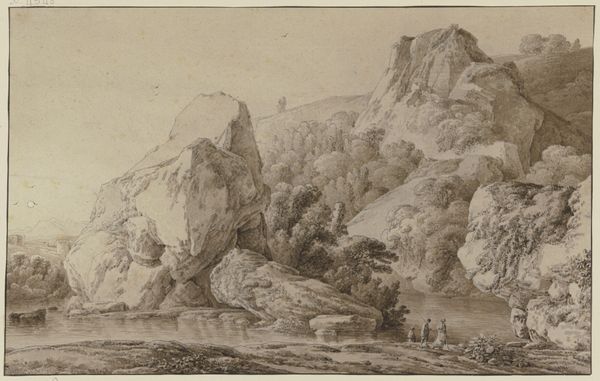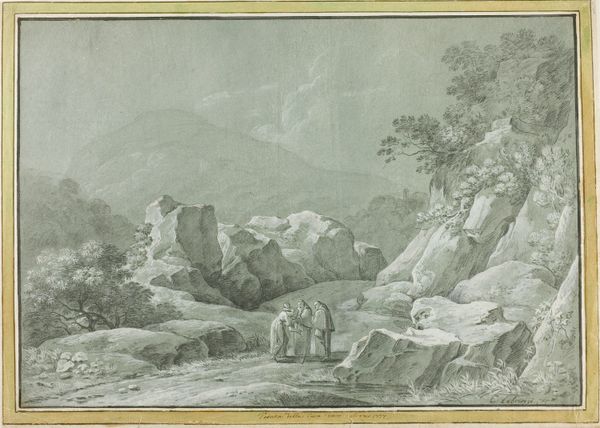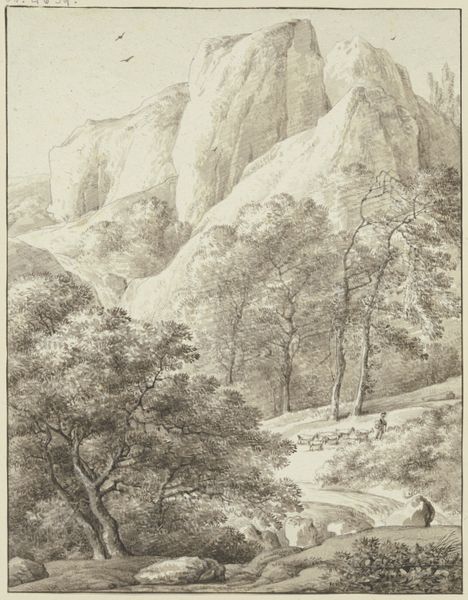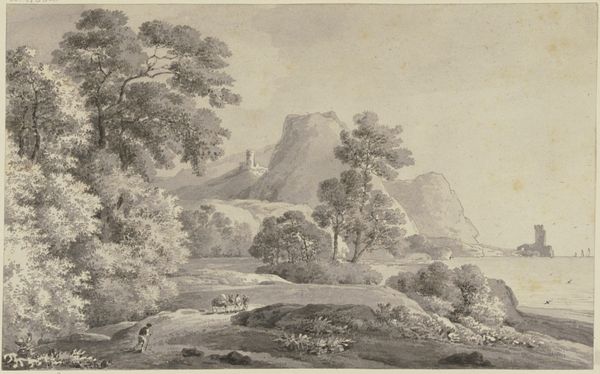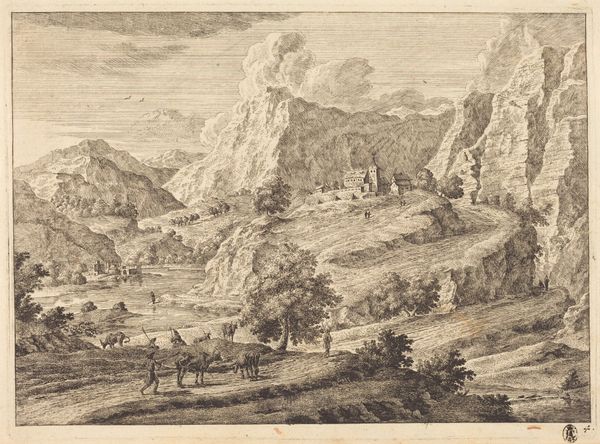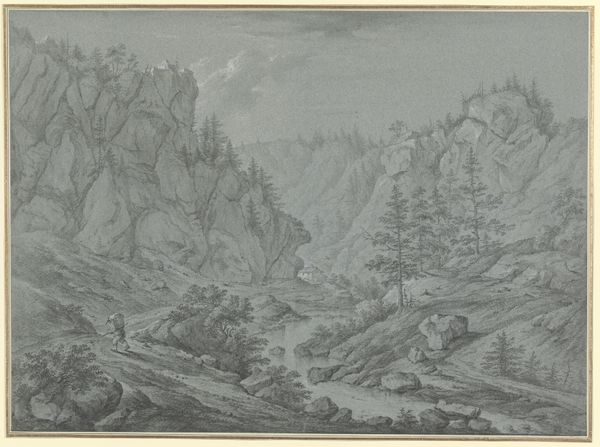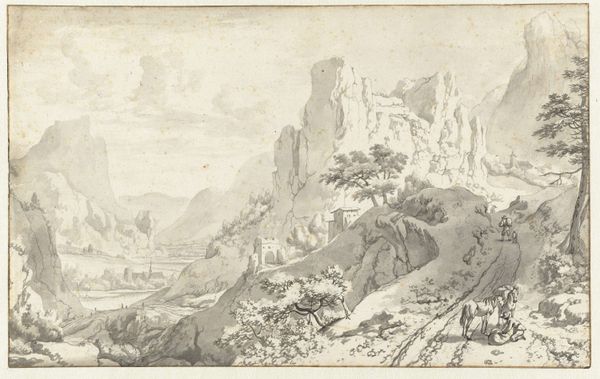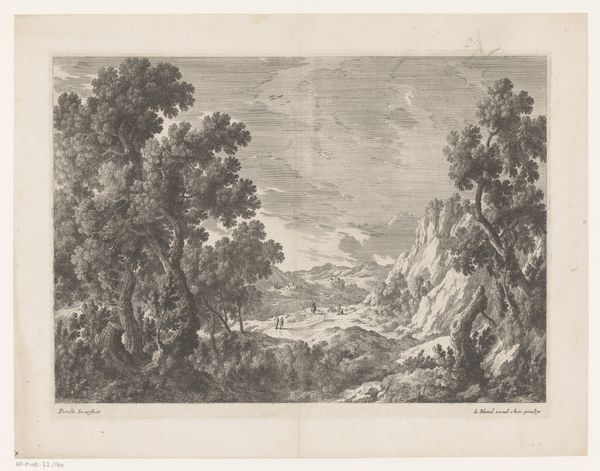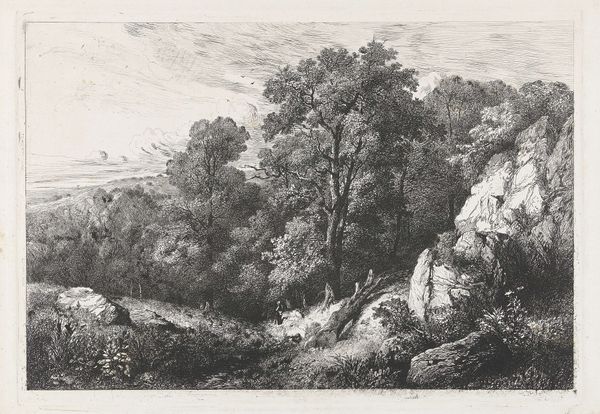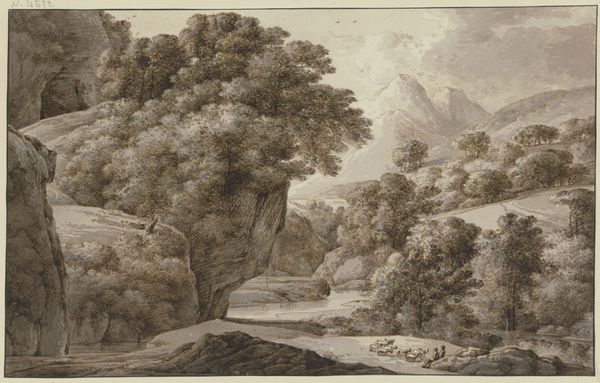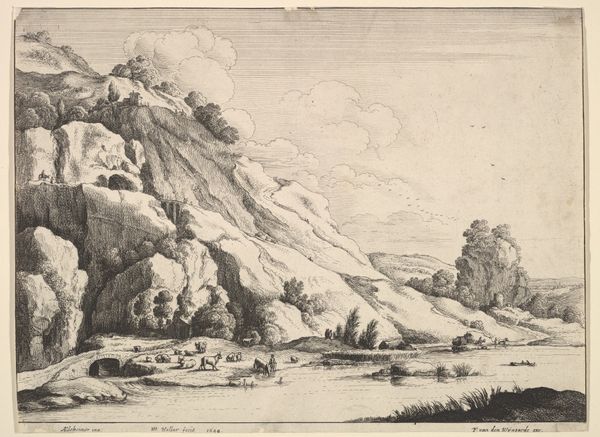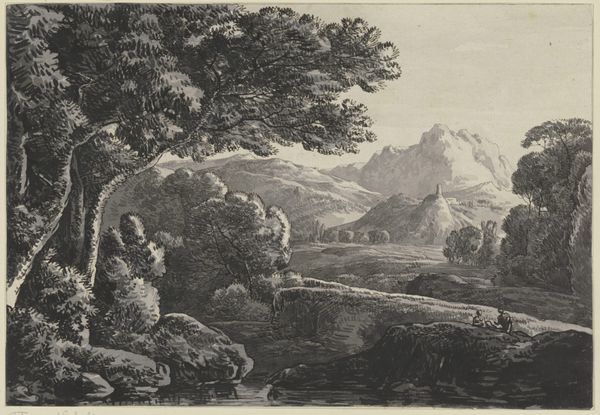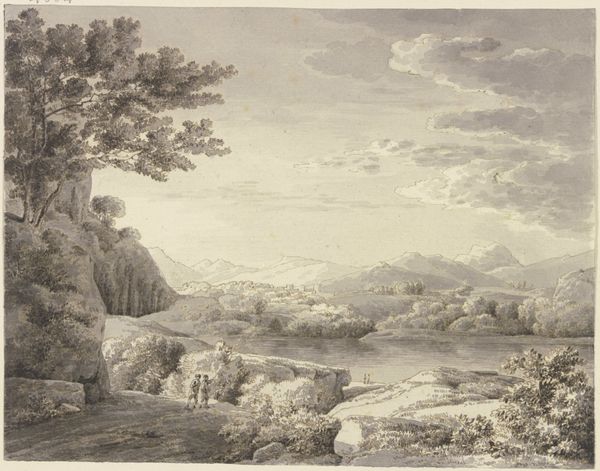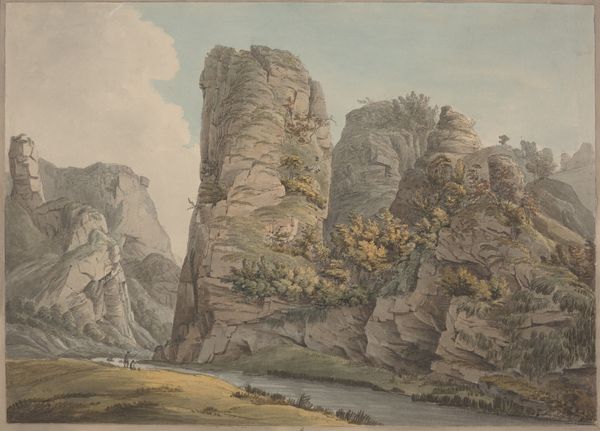
drawing, oil-paint, paper, ink, pencil
#
drawing
#
toned paper
#
baroque
#
oil-paint
#
landscape
#
paper
#
ink
#
pencil drawing
#
pencil
Copyright: Public Domain
Editor: This drawing, "Bergige Landschaft, vorne in der Mitte eine Felspartie," by Jan van Aken, was created around 1640 using ink, pencil, and oil paint on paper. It's a fairly muted scene, but something about the looming rock formations makes me uneasy. How do you interpret this work, particularly in the context of its time? Curator: It's interesting you mention the uneasiness. Consider the socio-political context of the Baroque period. There's often a tension between order and chaos, a sense of the sublime power of nature. Van Aken’s landscape, with its rugged, almost overwhelming rock formations, might reflect this tension. Do you notice how the small structure, possibly a dwelling, is dwarfed by the landscape? Editor: Yes, now that you mention it, there's definitely a sense of vulnerability. Almost like nature is indifferent to human presence. Curator: Precisely. And in the 17th century, this could speak to broader anxieties. Think about the Thirty Years’ War, which ravaged Europe during this time. The seemingly eternal landscape stands in stark contrast to human conflict and suffering. How might ideas around class have affected Van Aken's depictions of nature and society? Editor: That’s a powerful connection. It makes me think about who had access to landscapes like this, both in reality and through art. Probably not the lower classes experiencing the brunt of war. The artwork then perhaps perpetuates the luxury enjoyed by the upper classes. Curator: Exactly! By positioning the wild landscape as separate from societal concerns, it reinforces existing power structures. The artistic process itself--who gets to create, who gets access to it--reflects class, race and gender bias of the era. What are your thoughts now? Editor: Wow, I initially just saw a landscape. But seeing it through a lens of social and political issues from the Baroque era gives it so much more depth. I'll never look at another landscape the same way! Curator: Indeed. Art acts as a mirror, reflecting and refracting the complex narratives of its time. We just need to ask the right questions.
Comments
No comments
Be the first to comment and join the conversation on the ultimate creative platform.
